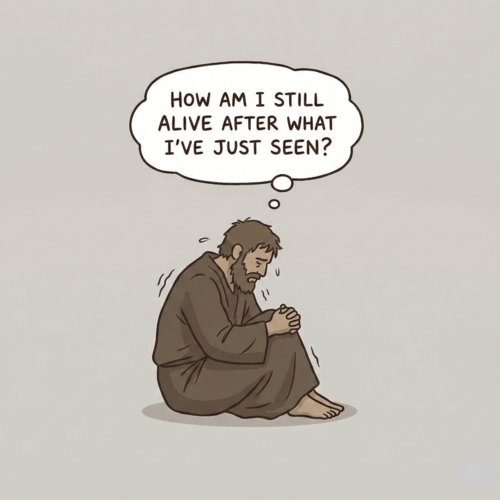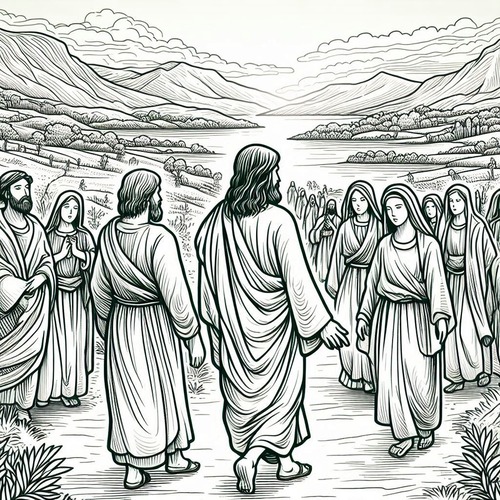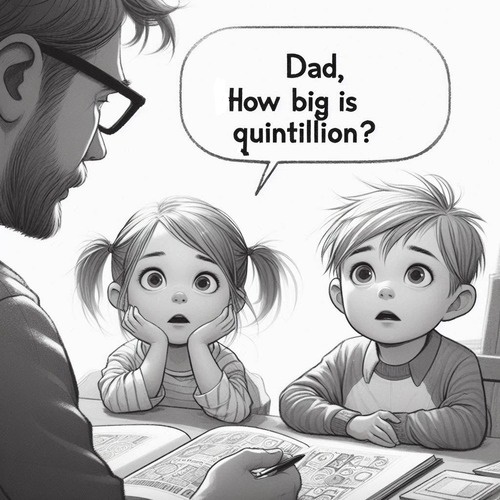Unsung Witnesses: How Minor Characters Validate Gospel Accounts
In the grand narrative of Christ’s life, death, and resurrection, we often focus on the prominent figures—Jesus Himself, the 12 disciples, religious leaders, or Pontius Pilate. Yet scattered throughout the Gospel accounts are dozens of ‘minor’ characters who appear briefly, serve a purpose, and then fade back into history.
These figures may seem to be incidental to the narrative—the woman who touched Jesus’ garment, Simon who carried the cross, or Malchus whose ear was cut off. However, they represent compelling evidence for the historical reliability of the Gospel accounts. Let’s explore how these unsung witnesses strengthen our confidence in Scripture’s authenticity.
MINOR CHARACTERS VALIDATE GOSPEL ACCOUNTS: THE POWER OF EMBARRASSING DETAILS
One of the strongest arguments for Gospel authenticity comes through what scholars call the “criterion of embarrassment.” Simply put, people making up stories rarely include details that create difficulty or embarrassment for their cause. Yet the Gospels frequently do exactly that.
Consider how women were the first witnesses to Christ’s resurrection (Matthew 28:1-10, Mark 16:1-8, Luke 24:1-12, John 20:1-18). In first-century Jewish culture, women’s testimony wasn’t considered reliable in legal settings. If the Gospel writers were fabricating a resurrection story, why choose witnesses whose testimony would be immediately discounted? The inclusion of these female witnesses—named specifically as Mary Magdalene, Joanna, Mary the mother of James, and others—points to the writers recording what actually happened rather than creating a narrative that’s optimised for effect.
Similarly, when Peter cuts off the ear of the high priest’s servant, John specifically names him as “Malchus” (John 18:10). This level of detail suggests the account comes from someone familiar with the actual events, providing a name that contemporary readers could potentially verify.
MINOR CHARACTERS VALIDATE GOSPEL ACCOUNTS: UNNECESSARY DETAILS THAT RING TRUE
The Gospels contain numerous details about minor characters that serve no obvious theological purpose—exactly what we’d expect from eyewitness testimony rather than myth-making.
When Mark describes Simon of Cyrene carrying Jesus’ cross, he adds the seemingly irrelevant detail that Simon was “the father of Alexander and Rufus” (Mark 15:21). This makes perfect sense if Mark’s original readers knew Alexander and Rufus personally, but would be a pointless invention otherwise.
Luke mentions Zacchaeus was “short in stature” (Luke 19:3), a detail that does nothing to advance any theological agenda but adds authenticity to the account. Similarly, John notes Nicodemus came to Jesus “at night” (John 3:2)—a small detail that creates a vivid picture of a secret meeting.
These “unnecessary details” provide what scholars call narrative texture—the kind of specific, concrete elements that typically come from genuine memories rather than fictional creation.
MINOR CHARACTERS VALIDATE GOSPEL ACCOUNTS: CULTURAL AND SOCIAL AUTHENTICITY
The minor characters in the Gospels reflect the complex social and cultural realities of first-century Palestine with remarkable accuracy.
When Jesus encounters the Syro-phoenician woman in Mark 7:24-30, their interaction perfectly captures the ethnic tensions between Jews and Gentiles. The Gospel doesn’t sanitise this uncomfortable exchange but preserves it with all its cultural complexity.
Jairus is identified specifically as “a ruler of the synagogue” (Mark 5:22), reflecting the actual leadership structures of Jewish communities at the time. The woman with the flow of blood approaches Jesus from behind and touches His garment in secret (Luke 8:43-48), consistent with both the Jewish purity laws and the social shame associated with her condition.
These minor characters move and act within a world that archaeological and historical research confirms existed just as described—not the idealized or simplified world we might expect in legendary accounts.
THEOLOGICAL SIGNIFICANCE WITHOUT FABRICATION
The Reformed tradition has long emphasised that Scripture must be allowed to speak for itself rather than being forced into our predetermined frameworks. What’s striking about the minor characters in the Gospels is how they often illustrate profound theological truths, but in ways too subtle and complex for simple invention.
Consider the Roman centurion who declares, “Truly this was the Son of God!” (Mark 15:39). That a representative of the empire that executed Jesus would be the first to recognise His divinity—ahead of any Jew—after death carries powerful theological implications about the universal scope of Christ’s kingdom. Yet it’s presented as a straightforward historical detail rather than an overworked theological point.
The widow who gives two small copper coins (Mark 12:41-44) beautifully illustrates the nature of sacrifice and whole-hearted devotion. Jesus could have simply taught this principle, but instead, we get this brief, touching encounter with a nameless woman whose actions speak volumes.
CONSISTENCY ACROSS MULTIPLE ACCOUNTS
When different Gospel writers mention the same minor characters but with distinct yet compatible details, we see evidence of independent attestation rather than copying.
Mary Magdalene appears in all four resurrection accounts, but each Gospel provides different details about her experience—exactly what we’d expect from multiple witnesses recounting the same events from different perspectives. She’s joined by “the other Mary” in Matthew, by several named women in Luke, and appears alone initially in John’s account.
Simon Peter’s mother-in-law is mentioned in Matthew, Mark, and Luke—each providing consistent but not identical accounts of her healing.
This pattern of “coherence without uniformity” is a hallmark of truthful testimony.
NAMES THAT INVITE VERIFICATION
The Gospel writers frequently include specific names of minor characters that would have served no purpose unless those individuals were known to the original audience.
Mark mentions “Alexander and Rufus” as the sons of Simon of Cyrene (Mark 15:21). This casual reference makes sense only if Alexander and Rufus were known to Mark’s readers, who could presumably verify the story with them.
Luke specifically names “Joanna, the wife of Chuza, Herod’s household manager” (Luke 8:3). This level of specific identification suggests Luke expected his account could be checked against known individuals.
When names are omitted, there’s often an implied reason—protection of vulnerable individuals or respect for privacy—rather than because the character is fictional.
‘MINOR’ CHARACTERS AS MODELS OF FAITH
From a Reformed perspective, these brief encounters beautifully illustrate core doctrines about salvation and faith.
The thief on the cross (Luke 23:39-43) demonstrates salvation by grace alone through faith alone. With no opportunity for good works or religious ritual, he simply trusts in Jesus and receives the promise of paradise.
Blind Bartimaeus (Mark 10:46-52) persists in crying out for mercy despite the crowd’s attempts to silence him—a powerful picture of the elect being drawn irresistibly to Christ despite obstacles.
The Roman centurion who recognises Jesus’ authority (Matthew 8:5-13) displays a faith that Jesus Himself calls greater than any He has found in Israel—foreshadowing the inclusion of Gentiles in God’s covenant community.
CONCLUSION: MINOR CHARACTERS VALIDATE GOSPEL ACCOUNTS
The minor characters of the Gospels provide compelling evidence for the historical reliability of these accounts. Their presence—often awkward, sometimes confusing, but always authentic—points to narratives grounded in actual events rather than theological fiction.
For the careful reader, these brief encounters offer windows into the world Jesus inhabited and the lives He transformed. They remind us the grand story of redemption unfolds not just through prominent figures but through ordinary people whose lives intersected with the Saviour.
In a faith where God consistently works through the unexpected and overlooked, perhaps it’s fitting that some of the strongest evidence for the Gospels’ truthfulness comes from these unsung witnesses—people just like us, caught up in the greatest story ever told.
OTHER ‘MINOR’ NEW TESTAMENT CHARACTERS WHO PLAY CRUCIAL ROLES
Lydia in the book of Acts: Lydia was a businesswoman from Thyatira who dealt in purple cloth, making her one of the few women entrepreneurs mentioned in Scripture (Acts 16:14-15). Paul met her in Philippi where she became the first European convert to Christianity. After her conversion, she opened her home to Paul and his companions, establishing what was likely the first church in Europe.
- Onesiphorus, Paul’s remarkable friend: Onesiphorus is mentioned only in 2 Timothy, where Paul commends him for “often refreshing me” and “not being ashamed of my chains” (2 Timothy 1:16-18). Unlike others who abandoned Paul during his Roman imprisonment, Onesiphorus actively searched for Paul until he found him. His loyalty during Paul’s darkest hours demonstrates the profound importance of Christlike love faithful friendship in Christian ministry.
- Joseph Barsabbas, also called Justus Joseph Barsabbas was one of two candidates (along with Matthias) considered to replace Judas Iscariot as the twelfth apostle (Acts 1:23-26). Though not ultimately chosen, his qualification as someone who had been with Jesus “from the baptism of John until the day when he was taken up” suggests he was a faithful follower throughout Jesus’ entire ministry. His willingness to serve despite not being selected illustrates humble submission to God’s sovereign choice.
- Rhoda in the book of Acts: Rhoda was a servant girl who recognised Peter’s voice when he knocked at the door after his miraculous release from prison (Acts 12:13-15). Her excitement was so great she forgot to open the door, running instead to announce his arrival to the praying believers who ironically didn’t believe her. This small detail captures both the very human reactions to answered prayer and provides evidence of the unvarnished, authentic nature of Luke’s account.
- Mnason of Cyprus, mentioned only once: Mnason is described simply as “an early disciple” with whom Paul and his companions stayed on their way to Jerusalem (Acts 21:16). The brief mention that he was “an early disciple” suggests he may have been a believer since the day of Pentecost or shortly thereafter. His hospitality to Paul’s entourage demonstrates how early Christian mission work relied on networks of believers opening their homes.
- Epaphroditus, who risked his life to serve Paul: Epaphroditus was sent by the Philippian church to deliver their gift to Paul and to minister to his needs during imprisonment (Philippians 2:25-30). Paul describes him with three significant titles: “brother,” “fellow worker,” and “fellow soldier,” indicating both his relationship to Paul and his dedication to the gospel. He nearly died in service to Paul, showing that seemingly “minor” characters often made major sacrifices for the early church.
Damaris mentioned in Acts 17: Damaris was an Athenian woman who believed in Christ after hearing Paul’s speech at the Areopagus (Acts 17:34). She is specifically named alongside Dionysius the Areopagite, suggesting she may have been a person of some social standing in Athens. Her conversion demonstrates how the gospel crossed not only geographic and ethnic boundaries but also gender barriers in the ancient world.
MINOR CHARACTERS VALIDATE GOSPEL ACCOUNTS: OUR RELATED POSTS
- Undesigned Coincidences: Subtle Details That Validate Bible Truth
- Mountains or Molehills? How Hyperbole Reveals Bible Truth
- The Study of Names: Surprising Support for Bible Reliability
Editor's Pick

The Throne-Room Vision: Who Did Isaiah See?
The scene is unforgettable: Isaiah stands in the temple, and suddenly the veil between heaven and earth tears open. He [...]

The Angel of the Lord: Can We Be Certain It Was Christ All Along?
Throughout the Old Testament, a mysterious figure appears: the Angel of the LORD. He speaks as God, bears God’s name, [...]
SUPPORT US:
Feel the Holy Spirit's gentle nudge to partner with us?
Donate Online:
Account Name: TRUTHS TO DIE FOR FOUNDATION
Account Number: 10243565459
Bank IFSC: IDFB0043391
Bank Name: IDFC FIRST BANK






